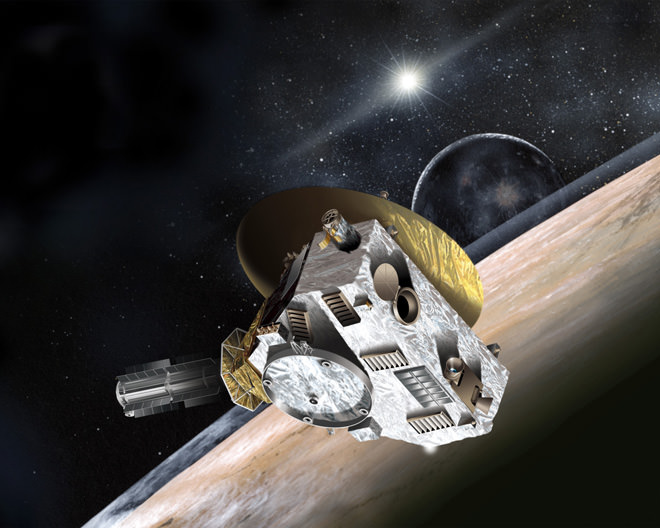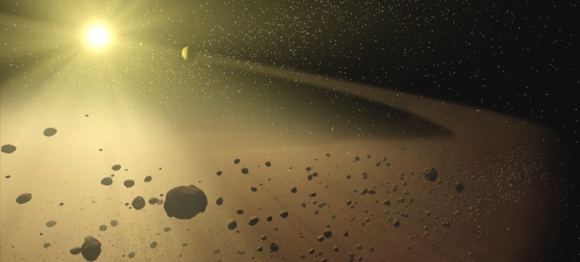[/caption]
The New Horizons spacecraft crossed a milestone boundary today: it is now closer to its primary destination, Pluto, than to Earth. But New Horizons –the fastest man-made object — is not yet halfway to the dwarf planet. That won’t happen until February 25, 2010. New Horizons is now 1,440 days into its 9.5-year journey and well past 15 AU (astronomical units) from the Sun. But there is a long haul yet to go: there are still 1,928 days until operations begin for the close encounter, and 2022 days until the spacecraft reaches the closest point to Pluto in the summer of 2015. It is exciting to think what we will learn about Pluto and the Kuiper Belt in five and a half years. Will our perspectives change? Hard to believe they won’t.
New Horizons is currently traveling at about 50,000 kph (31,000 mph) (relative to the Sun) and is located about 2.4 billion kilometers (1.527 billion miles) from Earth.
The spacecraft launched in January 2006.
New Horizons will be taken out of hibernation in early January to repoint the communications dish antenna to keep up with the changing position of the Earth around the Sun. It was last awoken in November to download several months of stored science data from the Venetia Burney Student Dust Counter, to correct a recently discovered bug in the fault protection system software, (last thing anyone wants is to have the spacecraft go into safe mode at closest approach), and to upload instructions to run the spacecraft through early January. Telemetry shows that New Horizons is in very good health and almost exactly on its planned course.
Principal Investigator Alan Stern wrote in his last PI’s Perspective notes that the science team will meet in January to discuss which Kuiper Belt Objects they hope to “fly by and reconnoiter after Pluto. Those searches will begin next summer and continue through 2011 and 2012. Hopefully, they’ll net us four to 10 potential targets.”


